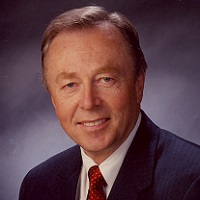 Mike Halligan, Dennis & Phyllis Washington Foundation
Mike Halligan, Dennis & Phyllis Washington Foundation
Title: Executive Director
On the job since: 2002
Foundation founded in: 1988
Geographic scope: Montana and other areas where Washington Companies operate
Grants made in 2015: $21 million
Staffing: 3.5 FTE
How has the path to high school and college success changed since you were a student?
The technology explosion in our society and in our schools has opened up vast new opportunities for teachers and students to access content far beyond the classroom at little or no cost. Students have access to study aides, supplemental academic content and research on any subject, providing them the ability to dive more deeply into subjects and access resources that were either inaccessible due to library limitations or very costly when I was a student.
What are the biggest obstacles to improving graduation rates in your community?
- The lack of parent engagement after middle school is a major obstacle. Schools are failing to require parents to take a role in their child’s school, whether it be reading to or with kids, monitoring hallways and playgrounds, tutoring, mentoring or volunteering to go on field trips or speak in classrooms. Any participation that shows that the parent cares about their child’s time in school, by investing their own time at the school, would help tremendously with graduation rates.
- Limited access to programs that assist in retention and progression of students through secondary education is an obstacle to graduation in our community. Job shadowing, expanded tutoring in critical areas such as math, science and English, exposure to the arts, International Baccalaureate and AP courses, in-school academies and financial literacy training are all examples of enhanced programming that could be provided electronically or in person, that would improve graduation rates if students were afforded access.
What are your core strategies for supporting students and improving graduation rates from high school and/or college?
Our foundation’s core strategy for improving graduation rates is supporting initiatives that are owned by the community, such as Montana’s Graduation Matters program. It is my belief that for an initiative like this to be successful, it must be owned by the community — a true grassroots effort. By creating partnerships between school and university officials, parents, nonprofit leaders, business leaders and alumni — and keeping local control of the initiative — the group is able to create innovative and multifaceted solutions that the community is passionate about supporting.
How are demographics changing and affecting your funding priorities and strategies?
We track changes in the demographics in our community, particularly poverty figures. Unfortunately, we have not moved the needle on poverty. We strive to give those who are most vulnerable in our communities the tools they need to be successful. Research shows that 18-23% of Montana’s children are living in poor families, and do not have access to basic needs items. We look for projects that use innovative and effective approaches to fill the basic needs of our community, as well as projects designed to offer those most disadvantaged, particularly youth, with access to opportunities that will inspire them to reach for the stars.
What’s been a big success for your organization related to supporting high school and college students?
Graduation Matters Montana, a statewide program we have been the primary funder of for five years, has resulted in the state graduation rate increasing from 80.4% in 2010 to 86% in 2015. The objectives are:
- Increase the rate of Montana students graduating from high school college- and career-ready.
- Establish a support network between schools, businesses and community organizations for student success.
- Create school-based and community-based opportunities for student success.
What are the most important public policy issues for you this year, and what are you doing about them?
Education is generally the foundation’s most important public policy issue. Montana has a biannual legislature, and so this year we'll be working alongside school administrators, government officials, and other business and nonprofit leaders to lobby Montana’s policymakers for increased investment in our schools. In particular, we will focus on:
- Early childhood education: Through the support of summits to convene public policy makers and business leaders to teach them of the societal impact of early childhood education and how they can be drivers of change.
- High school retention and graduation: By working alongside other business and government leaders with Montana’s public policy makers in order to increase state investments that offer youth more opportunities and options in Montana’s public schools.
- 21st century education: Working with policy makers to increase the investment in infrastructure that will create a 21st century learning environment in our schools.
What’s one more question we should ask, and how would you answer it?
Q: How can we address the widespread need for remedial classes at the two-year and four-year college level?
A: The EdReady program, spearheaded by The NROC Project, is a math readiness system to help students avoid the time and cost of remedial courses. The program has made tremendous strides; more than 40,000 individuals in Montana have enrolled in the program. I also recommend taking a look at Montana Digital Academy and Complete College America.
Mike Halligan is executive director of the Dennis & Phyllis Washington Foundation, joining us this month for our virtual roundtable with graduation funders and next month as co-chair of our Under One Sky conference in Missoula, Montana.